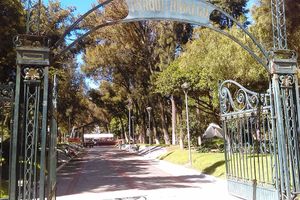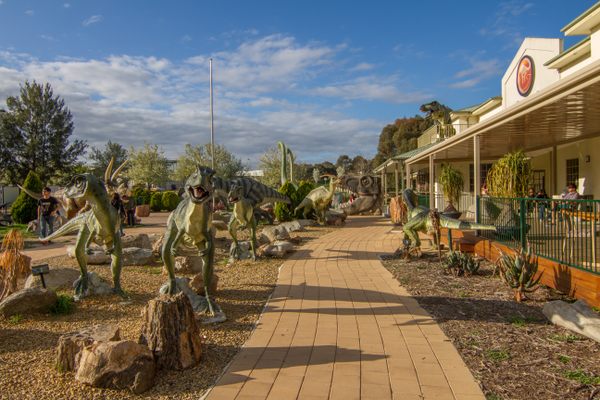About
A late-2000s effort by the state government to develop Pachuca's touristic potential, especially among visitors from Mexico City, saw a remodeling and widening of the highway connecting both cities. Massive monuments with inspiring names like "The Victory of Wind," mementos of Pachuca's silver mining past, and dinosaurs, were placed along the highway's median strips for some added "wow" factor.
The dinosaurs are linked to the nearby El Rehilete Interactive Museum and its outdoor Dinoparque. Opened in 1997, El Rehilete (The Pinwheel) is Pachuca's response to Mexico City's Papalote Children's Museum. Both museums are named after wind-powered childhood playthings and share a focus on interactive exhibits that allow children and the entire family to learn about scientific concepts like fluid density, electrostatic, and surface tension.
For those less interested in wordy concepts, the park also features every kid's favorite—dinosaurs. Dinoparque is one of El Rehilete's most recent additions, an outdoor park with tens of models representing all types of Sauria, from marine reptiles to the great carnivores popularized by Hollywood.
Unique among the world's many other urban dinos, Pachuca's do not represent a particularly strong paleontological heritage—the northern state of Coahuila has the fame of being Mexico's Paleontology Capital—nor are they a roadside business' cartoony mascots. They are realistic, a bit scary, and were placed there pretty much to just look cool.
Related Tags
Know Before You Go
Tickets for the museum are tiered, with different prices for access to the areas like the museum itself, the Planetarium and Dinoparque. As of July 2019, the cost of the ticket including access to all areas is MXN$91. The median strip dinosaurs are free to view in a public area across the street from the museum.
Flavors of Oaxaca: Markets, Mezcal & Home-Cooked Meals
A Culinary and Cultural Journey Through Oaxaca.
Book NowPublished
August 7, 2019











































